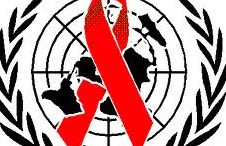For the first time ever, the developing world is taking a greater financial share of fighting HIV/AIDS than wealthier countries. This is the key finding of a new report from UNAIDS, which shows that in 2011, low and middle income countries contributed $8.6 billion to fighting HIV/AIDS compared to $8.2 billion from the developed world.
According to the report, 81 countries increased their domestic investments for AIDS by more than 50% between 2006 and 2011. As economies in low- and middle-income countries grow, domestic public investments for AIDS have also grown. Domestic public spending in sub-Saharan Africa for example, (not including South Africa) increased by 97% over the last five years. South Africa already spends more than 80% from domestic sources and has quadrupled its domestic investments between 2006 and 2011.
“This is an era of global solidarity and mutual accountability,” said Michel Sidibé, Executive Director of UNAIDS. “Countries most affected by the epidemic are taking ownership and demonstrating leadership in responding to HIV.”
This is significant because it shows a maturation of a decade long global effort to reverse the tide in HIV/AIDS. In the early years, the developed world provided nearly all resources to HIV/AIDS treatment and prevention in poorer countries. This provided the seed money that helped make HIV/AIDS treatment cheaper over time.
There were also some key political developments among African countries where the burden of HIV is the highest. In 2001, the African Union endorsed the so-called Abuja Declaration in which member states pledged to spend at least 15% of their national budgets on health. There is no real enforcement mechanism for this agreement, but it added to a kind of peer pressure that nudged African countries to spend more on HIV domestically.
As a result of these various developments, you get a chart like this:
Everyone — donor and developing country alike — needs to do more. As you can see from the chart we are still a long way off from the 2015 target to halt and reverse the spread of HIV/AIDS. According to the UNAIDS report, we are still about $7 billion short of what’s required to achieve that goal by 2015.
When the global HIV/AIDS community meets in Washington, DC next week expect “country ownership” and “burden shifting” to be key themes bandied about.

